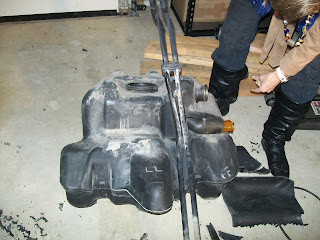Throughout the process of preparing the car for new, electric parts, I have been researching exactly the parts I will need. Here are the main parts that go into an electric conversion.
- Electric motor, replaces typical engine
- Batteries, provide energy for motor
- Controller, regulates the flow of energy from the batteries to the motor
- Charger, recharges the batteries
In its simplest form, this is what a conversion comes down to: these four main parts. Of course there are other things necessary like a throttle potentiometer, main contactor, electric steering pump, vacuum pump for the power brakes, and gauges for measuring the battery pack, but these are minor details in the concept of an electric car. As for the components that I have chosen to use:



















